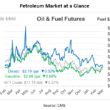The 132-year-old Hearst Corporation is arguably the world’s oldest multi-media group as a 19th century newspaper publisher which invested in magazines and movies before Rupert Murdoch was born. It also has a fair claim to be the best. Not because it has consistently been the most successful in any or all of its chosen media sectors, or has been the most profitable. Its success can be measured by long-term profitability across most media, and also an ability to sustain partnerships, joint ventures and strategic alliances. The company founded by the fiery W. Randolph Hearst has become the best media partner of all.
The $11bn-revenue family-owned Hearst (which is believed to generate pre-tax profits of some $1.5bn) was built on the successive fortunes of daily newspapers and magazines. Then, in 1990, it became a 20% shareholder in the Disney-controlled ESPN sports cable network which, alongside other broadcast and cable TV networks, frequently accounted for almost 100% of Hearst profits – just as Cosmopolitan had done in the two previous decades as the world’s most successful magazine. And, now as TV comes off the boil, along comes Hearst’s fast-growing business media.
It began in medical and automotive data and accelerated through aviation and the acquisition of the $1.3bn Fitch, the financial ratings and intelligence group. B2B data now accounts for 40% of the Hearst profit, compared with 14% just five years ago. That’s a big shift from 2006 when the widely-admired Frank Bennack (longtime chairman and architect of the modern Hearst Corporation) presided over the opening of the Norman Foster-designed Hearst Tower in Manhattan by saying it had effectively been paid-for by Helen Gurley Brown, the legendary editor whose revolutionary Cosmopolitan magazine had transformed the company in the 1960s.
That was then. Last year the company fought to rebuild its battered magazine profits by appointing as Hearst Magazines president Troy Young, the digital whizz who had spent five years building the US company’s digital audiences, revenues and profit. Hearst had shown the way, first by separating digital from print and then by bringing it all back together again – but with digital now clearly in charge and creating great content sharing systems. Young’s appointment was a shock to many longtime magazine people who lost comfortable berths in the Hearst Tower. But Hearst Corp CEO Steve Swartz (the former financial journalist who has led its investments in business media) wanted real change: “…we need the readers to pay more for the product. And we need to find a way to make digital subscription products work for magazines in the way that they are starting to work for newspapers.”
Business media is making Hearst an increasingly international business. But the company which pioneered the large-scale licensing of magazines (Cosmopolitan once had almost 70 global editions) still has some 300 magazines outside the US, variously owned, part-owned and licensed. In the UK, its wholly-owned subsidiary claims monthly magazine circulations of almost some 4m and a digital footprint of 20m people through 17 brands including Elle, Good Housekeeping, Esquire, Cosmopolitan, Men’s Health, Women’s Health, Runners World, Real People, Country Living, and Harper’s Bazaar. The legendary magazines with their bright colours and feisty cover lines still look good on the news-stands. But they have been filleted by the dramatic loss of advertising and circulation revenue.
The London-based National Magazine Company (now trading as Hearst UK) was Randolph Hearst’s first international business when he started it back in 1910. It has sometimes been highly profitable but relatively modest margins and erratic growth have never worn-out the loyalties of Hearst family shareholders and executives who enjoy summer-time visits. Frank Bennack frequently chairs the London company board meetings, not Steve Swartz who has taken the reins everywhere else. It is this emotional attachment, as much as the commercial potential, that may now lead to substantial new investment in the UK business that last year moved to the stylish “House of Hearst” office building on Leicester Square. It’s a statement.
CEO James Wildman joined Hearst two years ago after a distinctive career in advertising sales and tech across TV, online and newspapers. The open-faced Wildman has brought renewed energy, flair and confidence to Hearst UK, which has helped to grow its advertising and events. He claims that total revenue in 2018 grew for the first time in six years. But the £100m-revenue Hearst UK remains a crystal-clear picture of the challenges faced by magazine publishers. They must adjust to a media market which is, inevitably, dividing between the mega-audience digital platforms and ‘narrow but deep’ multi-media specialists, with only limited scope for “semi-mass market” magazine publishers in the squeezed middle-ground.
Hearst publishes Good Housekeeping which, with its Good Housekeeping Institute testing and ‘seal of approval’, is a golden business with a potential well beyond a mere magazine and test kitchen. Even now, it may account for more than 50% of the UK company’s profits. But there are also 16 other magazine brands, some of which are unprofitable or marginal but which may help to generate advertising revenue across the portfolio. As if to underline how advertising dependance can continue to distort traditional media despite the need to get back to focusing on readers, most Hearst UK magazines pump out free copies (anything up to 50% of the total circulation of individual brands) to boost their audiences and support advertising sales. It is one of the less smart ways in which Hearst UK differs from its peers. Even Good Housekeeping gives away 16% of its circulation. Nobody needs reminding that such hyping tends not to fool advertisers and helps to depress the long-term copy sales revenue on which most UK magazines depend for their profitability.
Hearst UK has two digital-only brands (the showbiz DigitalSpy and the medical NetDoctor), a growing portfolio of content marketing magazines produced on behalf of blue-chip clients, some imaginative brand licensing deals with hotels and furniture makers, and a widening range of events large and small. It is a hyper-active company that is especially good at advertising sales and (even now) at promoting the sizzle of magazines to ad agencies. But the corporate web site can make you dizzy. It is easy to feel that Hearst UK has too many brands, too diverse a portfolio, and is just too busy trying to do almost everything with its magazines – but too little for the future.
The challenge must be to harness the energy with a robust content-focused strategy, mostly defined by something other than magazine brands and that will – in the long-term – be funded primarily by something other than advertising. It’s the familiar task of developing a new business while maximising the profits from the old one.
Hearst UK may have made a start with the embryonic “Financially Fabulous” digital and events brand which gets content and promotion from some of its major magazines. The project could point towards the company’s potential future as a multi-media content specialist in targeted vertical sectors like Travel, Health, Food and Fashion, in which it has an established reputation, real expertise and content. In such a strategy of vertical communities, it could develop new and existing brands in:
- Digital (and even print) information and entertainment
- Events especially exhibitions
- B2B media
- Market research, intelligence and data
The emphasis of a vertical could be on versatility, deep expertise and diverse revenues, hence the added benefit of B2B information services and events. The need, as ever, is to reduce the dependance on print. But, despite its build-up in digital and events, Hearst UK is still dominated by magazines, magazine people, and the language of magazines. It needs to change.
The development of market research and intelligence services could be good diversification for a company that already develops consumer data in order to sell advertising and sponsorship. It has long seemed logical for consumer magazine publishers like Hearst to get into the research business.
A new Hearst UK “vertical” strategy could drive the acquisition of specialist media companies in each of its targeted sectors. It might start with the £70m Centaur Media, the slimmed-down B2B specialist in marketing, research and intelligence. It could follow with targeted new products and services in each vertical. CEO Wildman should be encouraged by the availability of bolt-on media deals in the UK market and by his parent company’s rock-solid balance sheet and appetite for strategic acquisitions. Frank Bennack’s latest visit to London would have made the point. Go on, James.




